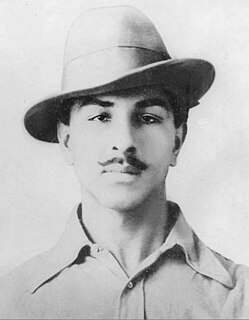 W
WMandayam Parthasarathi Tirumal Acharya was an Indian nationalist, communist and anarchist who was among the founding members of the Communist Party of India. In a long political and activist life, Acharya was at various times associated with India House in London and the Hindu-German Conspiracy during World War I when, as a key functionary of the Berlin Committee, he along with Har Dayal sought to establish the Indian Volunteer Corps with Indian prisoners of war from the battlefields of Mesopotamia and Europe. Acharya subsequently moved in 1919 after the end of the war to the Soviet Union, where he was one of the founding members of the Communist Party of India at Tashkent. However, disappointed with the Communist International, Acharya returned to Europe in the 1920s where he was involved with the League against Imperialism and subsequently was involved with the international anarchist movement.
 W
WShripad Amrut Dange was an Indian Politician who was a founding member of the Communist Party of India (CPI) and a stalwart of Indian trade union movement. During the 19th century, Dange was arrested by the authorities for communist and trade union activities and was jailed for an overall period of 13 years.
 W
WHari Kishan Talwar was an Indian revolutionary from Punjab. He is known mainly for his attempt to assassinate the Governor of Punjab, Sir Geoffrey de Montmorency. He was a young disciple of martyr Bhagat Singh. On 9 June 1931, he ascended to the gallows in Mianwali Jail with a defiant smile on his lips.
 W
WKishan Singh Garganj (1886-1926) was an Indian revolutionary from Punjab and was one of the founders of the Babbar Akali movement. Known mainly for his martyrdom for the cause of the movement, he was one of the renowned martyrs in the Babbar Akali movement.
 W
WGhulam Ambia Khan Lohani, , stylized as G.A.K. Lohani, or Luhani, was a revolutionary, journalist, professor, and communist of Bengali descent, who struggled against British rule over South Asia.
 W
WChandra Talpade Mohanty is a Distinguished Professor of Women's and Gender Studies, Sociology, and the Cultural Foundations of Education and Dean's Professor of the Humanities at Syracuse University. Mohanty, a postcolonial and transnational feminist theorist, has argued for the inclusion of a transnational approach in exploring women’s experiences across the world. She is author of Feminism Without Borders: Decolonizing Theory, Practicing Solidarity, and co-editor of Third World Women and the Politics of Feminism, Feminist Genealogies, Colonial Legacies, Democratic Futures, Feminism and War: Confronting U.S. Imperialism,, and The Sage Handbook on Identities.
 W
WNityanand Saha was an Indian revolutionary from West Bengal, known mainly for his involvement in the Satyagraha movement against the Portuguese government, to free Goa from Portuguese rule, under leader Ram Lohia. He was an active member of Janata Seva Sangh in Payradanga, Nadia, West Bengal, and on 13 August 1955, he was shot dead by the Portuguese government, along with his associates Baburao Thorat and Karnail Singh.
 W
WPandit Ram Rakha (1884–1919) was an Indian revolutionary and a member of the Ghadr party from Punjab. Known mainly for his involvement in Burma conspiracy case and a victim of inhuman torture of Cellular Jail.
 W
WSatyen Chandra Bardhan, known popularly as Kanu was Indian Bengali revolutionary and a soldier in Indian National Army, which was led by Netaji Subhas Bose. He was a trained radio communicator and revolutionary. Of the twenty people, four of them including Satyen Bardhan, were hanged in Madras Central Jail on the 10th September, 1943. He along with his three comrades Vakkom Abdul Khader, Anandan and Fauja Singh, walked up to the gallows, while singing the Vande Mataram song and raising the slogan of Vande Mataram.
 W
WShankar Mahale was one of the youngest revolutionary to hanged after Khudiram Bose, who was also a young revolutionary to die on gallows. He was though educated up to fourth standard, as he joined Mahatma Gandhi's Quit India Movement. He worked as a mill worker at Nagpur, in order to earn his living while joining the freedom struggle. It was on 19 January 1943, that he ascended to the gallows with a smile on his face.
 W
WBhagat Singh was a charismatic Indian revolutionary who participated in the murder of a junior British police officer and an Indian head constable in mistaken retaliation for the death of an Indian nationalist. He also took part in a largely symbolic bombing of the Central Legislative Assembly in Delhi and a hunger strike in jail, which—on the back of sympathetic coverage in Indian-owned newspapers—turned him into a household name in Punjab region, and after his execution at age 23 into a martyr and folk hero in Northern India. Borrowing ideas from Bolshevism and anarchism, he electrified a growing militancy in India in the 1930s, and prompted urgent introspection within the Indian National Congress's nonviolent and eventually successful campaign for India's independence.
 W
WSukumar Bannerjee was an Indian revolutionary, from West Bengal. He is known mainly for his martyrdom while protesting against the British officers at the Raniganj Paper Mill.
 W
WVakkom Abdul Khader (1917–1943) was South Indian revolutionary and a soldier in Indian National Army, which was led by Netaji Subhas Bose. He was a trained radio communicator and revolutionary. Of the twenty people, four of them including Satyen Bardhan, were hanged in Madras Central Jail on the 10th September, 1943. He along with his three comrades Satyen Bardhan, Anandan and Fauja Singh, walked up to the gallows, while singing the Vande Mataram song and raising the slogan of Vande Mataram. Abdul Khader himself raised the slogan "Netaji Subhas Babu ki jai ! Down with the British Government ! Victory to India !".